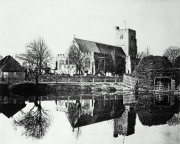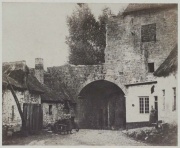Calotype
Jump to navigation
Jump to search
Description
An early photographic process for negative/positive images. The calotype process was patented by William Henry Fox Talbot in 1841 in England. It used a silver chloride emulsion coating on paper that was exposed to form a latent negative image that was developed with Gallic acid then fixed with Sodium hyposulfite. With contact printing, multiple positive images could be produced from each negative print.
Synonyms and Related Terms
Talbotype
Physical and Chemical Properties
Often the back of the negative was waxed prior to contact printing
Resources and Citations
- Encyclopedia Britannica, http://www.britannica.com Comment: "calotype" [Accessed March 18, 2002]. ...invented by William Henry Fox Talbot of Great Britain in the 1830s. ......Talbot patented his process in 1841.
- Preservation 101 -glossary of terms at www.nedcc.org/p101cs/terms.

